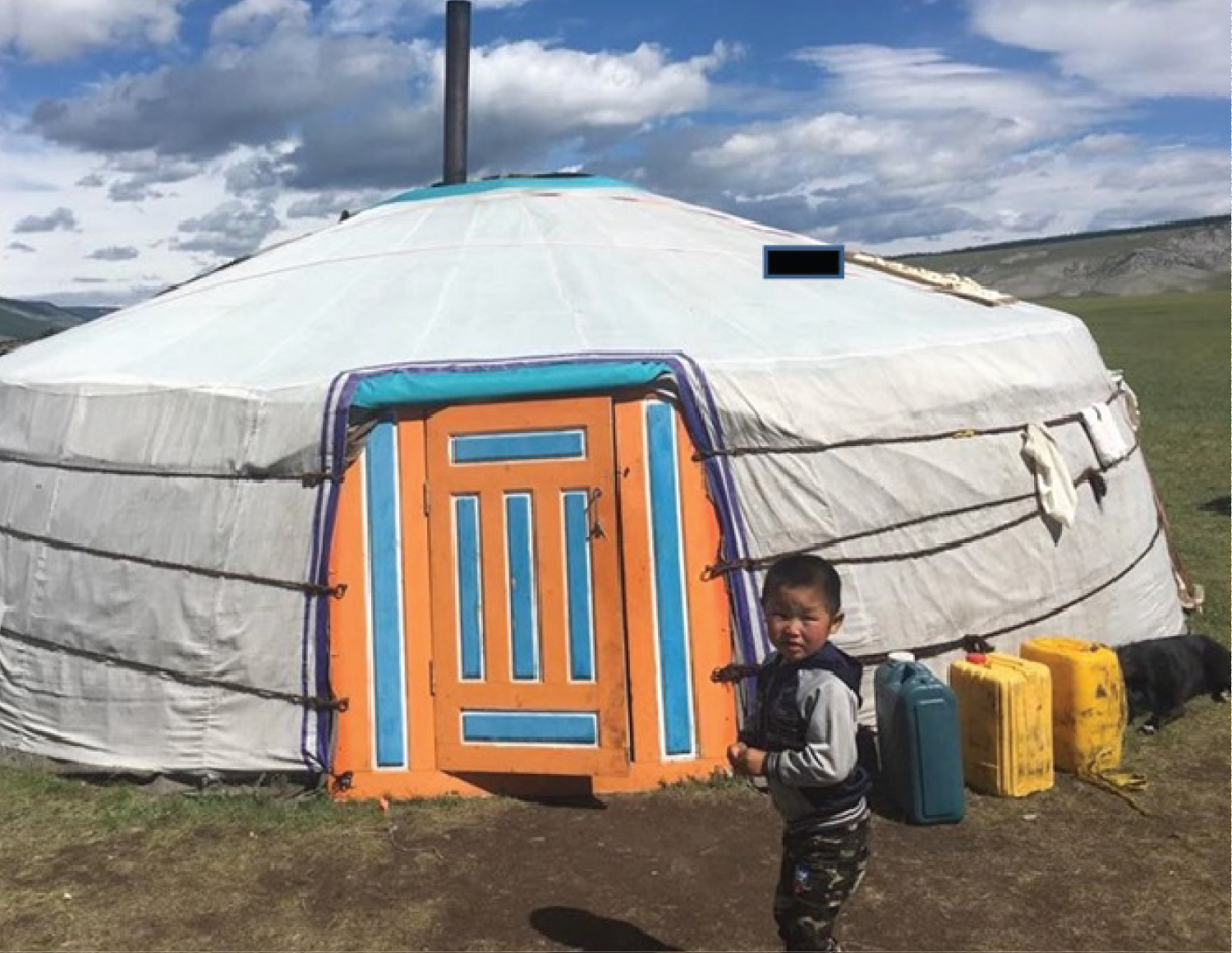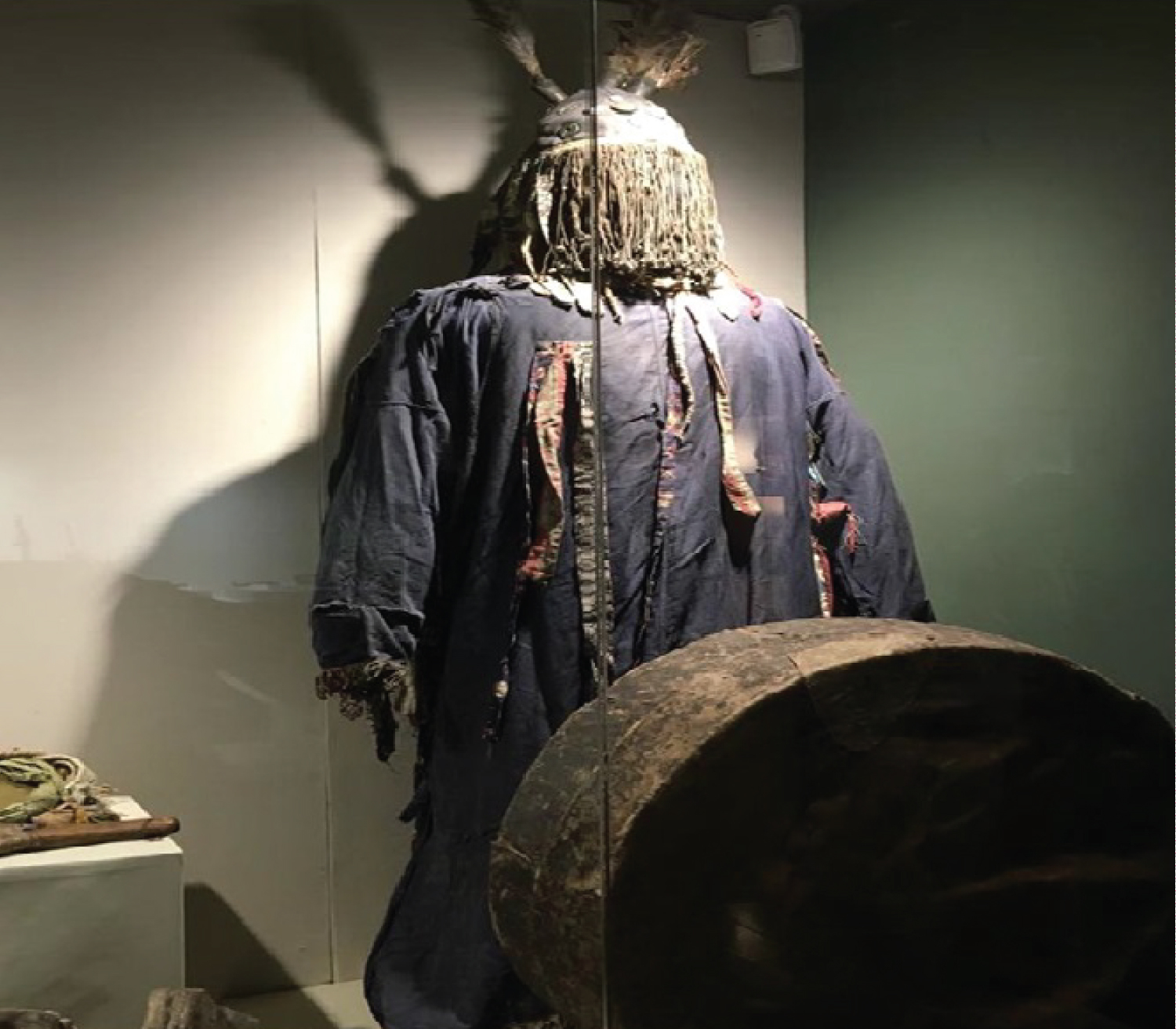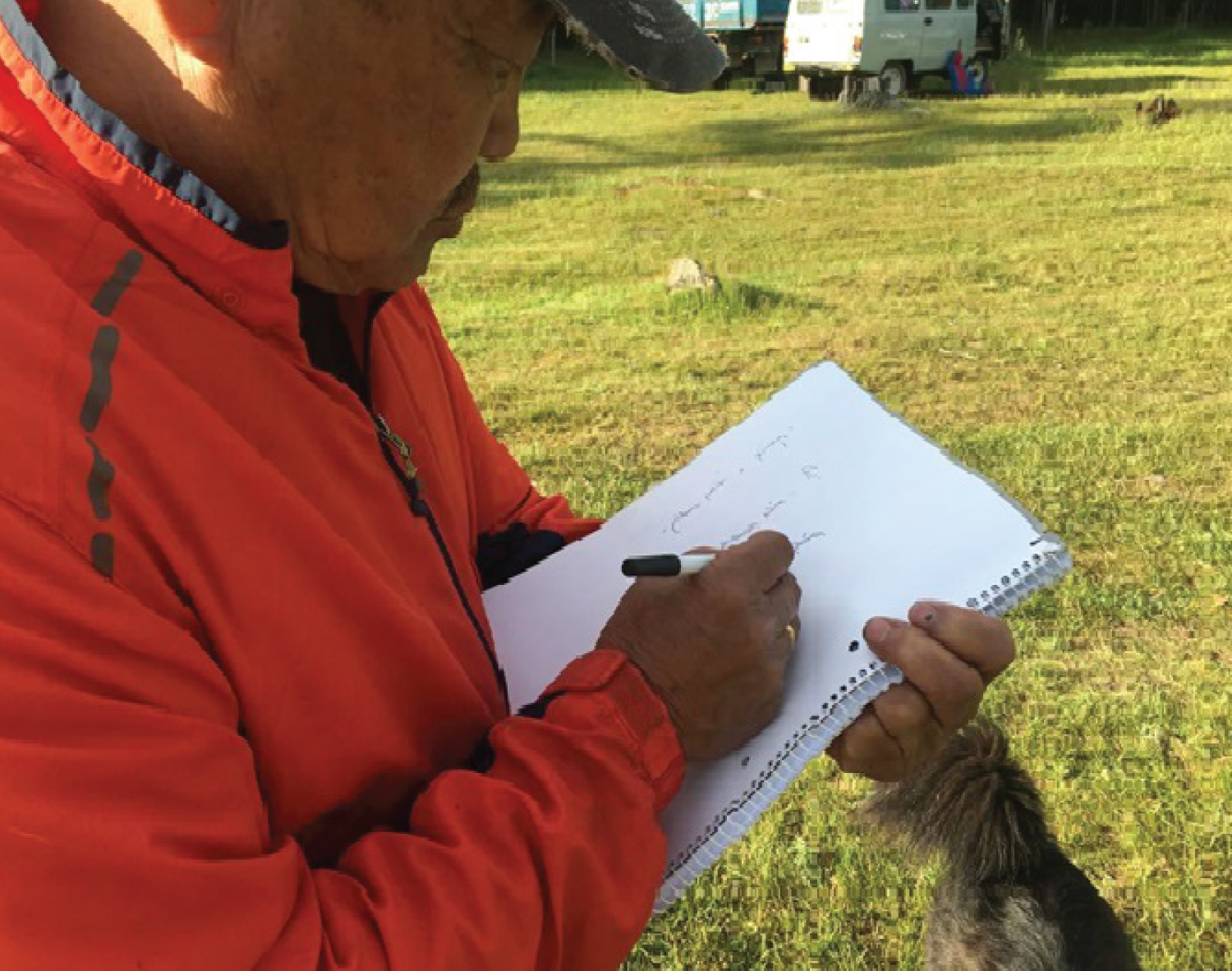The Shaman's Disease: Some Reflections from an Ethnographic Study of Epilepsy in a Community in Northern Mongolia
Keywords
Epilepsy, Seizure, Shaman, Ethnography, Animist beliefs, Stigmatization, Mongolia
Introduction
Epilepsy is a disorder of the brain characterized by an enduring predisposition to generate epileptic seizures and by the neurobiologic, cognitive, psychological, and social consequences of this condition [1]. About 50 million people worldwide have epilepsy, making it one of the most common neurological diseases worldwide. According to WHO data, almost 80% of people with epilepsy live in low- and middle-income countries. Epilepsy has been the subject of rigorous scientific study in traditional Western medicine for centuries. The access to studies of Magnetic Resonance, Neurophysiological, genetic, have allowed enormous advances in the understanding of its causes and pharmacological treatment. In spite of it, near 30% of the patients do not obtain a control of their seizures [2]. Also, in the traditional western medical interview, the patient's spiritual experiences are not usually investigated.
Since ancient times, epilepsy has been linked to spiritual or supernatural causes. The word epilepsy comes from the Greek verb epi-lambanein, which means to be seized, to be taken by surprise [3]. Epilepsy can manifest itself in various ways; however, it is the generalized tonic-clonic seizures that are commonly associated with this disease. During these episodes, the affected person loses consciousness, so he or she usually falls to the floor, has jerky movements with tongue bites and drools. The seizure may last one or two minutes, but it is usually followed by a period of confusion, slurred speech, and labored breathing until the person regains consciousness. For this reason, it is understandable that these manifestations have been called "the falling illnesses" (Temkin O).
Epilepsy's relationship to religion is obvious and goes back thousands of years. However, in today's society, medicine based on science, and on the diagnoses made by increasingly complex technological equipment, is moving away from the contemplation of these psycho-social factors of the disease.
Perhaps, in the case of epilepsy, this is more noticeable. Since the alteration of consciousness is almost impossible to evaluate qualitatively, the role of healers or people who know about the disease not through a scientific study of the subject, but as part of social, religious or ancestral conceptions is interesting. Anthropology, and especially ethnographic methods, allows a comprehension of these aspects, often not considered in traditional "scientific studies". Qualitative studies could compensate and complement these quantitative assessments and allow a comprehensive understanding of epilepsy. The description of the person with epilepsy of their experience is essential, since the alteration of consciousness can affect a person's experience of the "here and now". Also, the perceptions of the family and the local community, including the individuals involved in treatment, whether they are traditional or alternative practitioners, healers involved are fundamental [4].
Another important social issue that often affects people with epilepsy is stigmatization, especially if the person with epilepsy has no control over his or her seizures. Stigma can be defined as the relationship "between an individual's difference and the devaluation that society places on that particular difference" (Dell, 1986). For stigmatization to occur, the stigmatized person must hold the same beliefs as the society that devalues him or her. People with epilepsy have done this often and it is a big obstacle in their lives. Negative stereotypes of people with epilepsy are so ingrained that many patients accept them, without question. Attitudes towards people with epilepsy are influenced by the degree of knowledge about this disease. Today, even in developed countries, people with epilepsy suffer severe social, relationship and employment problems, not because of the severity of the seizures but because of discrimination resulting from misconceptions about the disease [3].
In a very interesting paper [4] the author explains that all these treatments can only be full filled by understanding the environmental, social and belief environment of the person with epilepsy. Understanding the perception of the disease, both personal and the family and social environment, religious beliefs, spiritual of the sick person, would allow better control of their disease. An important point made in this paper, is that the person with epilepsy, due to the altered state of consciousness or altered perceptions that are part of the seizures, may have differences in the subjective experience of self with the world. It also summarizes that despite cultural and environmental differences, general ideas and beliefs about the causes of epilepsy can be classified into four main themes: epilepsy as punishment for sin, epilepsy as a spell or possession, epilepsy as a contagious disease, and epilepsy as a brain disease.
An interesting study on the relationship between hunter-gatherer society and the origins of religion supports Tylor's (1871) original concept of animism. It is considered to be the oldest and most fundamental feature of religion because it allows people to think of supernatural beings or spirits. Animism is based on the conception that all elements have minds and are living, feeling beings. Animistic beliefs give all the elements of nature, such as animals, plants, rivers, mountains, a spirit. Human beings are part of this environment inhabited by living beings. Some authors consider animism as a natural and spontaneous way of thinking, which through a sustained, prolonged and generalized socialization to overcome animistic thinking with rationalistic objectivity [5]. Seen from this perspective, animism is not considered as a religion or a philosophy, but as a quality of human cognition that gives rise to social intelligence. It is a conception of life common to hunter-gatherer populations [6].
In communities where animistic beliefs predominate, epilepsy is considered to be due to the introduction of spirits into the body of the affected person. The interpretation of the causes and treatment of the person with epilepsy can only be carried out by the shamans, the only ones who were chosen and have the resources to connect with the spirits that produce the disease [7].
Mongolia is one of the few nations in the world that keeps its traditions alive, despite the advance of modernization. It is one of the least populated countries in the world. In the northern region of Mongolia, many of its inhabitants maintain their lives as nomadic herders in extreme climatic conditions. Although the Mongolian language is very difficult for Westerners to understand, Mongolians have been dealing with outsiders for centuries. Although they are reserved, they are very friendly. There are three major ethnic groups: Mongols, Tureg and Khamnigan (Tungus). Mongolians account for more than 90% of the population and non-Mongolian ethnic groups make up a small fraction, only more than 4%. In northern Mongolia, the population maintains a nomadic pastoral life and there are several ethnic groups around Lake Khovsgol. The region is interesting ethnographically, economically, culturally and religiously. The Tuvans, a Turkic-speaking group, and Mongols have lived here for hundreds of years. People move here in summer, autumn, winter and spring to graze their livestock during the four seasons of the year. When they move, they usually carry camels, and some families who spend the winter in the high mountains carry livestock. In general, most families travel by car when they live in the extensive mountain valleys.
These families have many horses, cows, yaks, sheep and goats, but not so many camels. Animal milk, dairy products and meat, except camel, are widely used in the diet. Some hunting is also customary, and a few families are engaged in fishing. These families live in Mongolian gers all four seasons of the year, make their own ger wood and buy it at the store. The ger is made of sheep's wool felt, with a white cloth on the outside. In general, most families travel by car when they live in the extensive mountain valleys. Around Soyo Hill, which was our research area, most people believe in shamanism, some believe in Buddhism, and some believe in both. In the mid-16 th century, Buddhism spread from Tibet to Mongolia and destroyed Mongolian shamanism, but shamanism is still practiced in northern Mongolia.
In Northern Mongolia, there are herding and farming communities, which maintain animist beliefs, and in which shamans play a role in the healing of various diseases. Perhaps epilepsy has a special role, since to be a shaman, you have to suffer from it [8]. It is therefore of great interest to understand whether the fact that both the person who is ill and the healer share the same exceptional experience could be an influential factor in the treatment of people with epilepsy. It would be useful to know what is the perception of the person with epilepsy within this community, and if the concept of stigmatization exists in communities with animistic beliefs. The objective of this ethnographic research is to understand the causes and treatments of epilepsy in a relatively isolated community and to try to understand whether animistic beliefs influence the conception of this disease. To try to understand how shamans explain the causes of epilepsy and how they treat it. We also wish to investigate if the fact that both the patient and the shaman share the same exceptional experience can be an influential factor in the treatment of people with epilepsy. Also, we wish to know the perception of the person with epilepsy within this community, their integration in it and if the concept of stigmatization is present in this community of animist conception.
Methods
An ethnographic field study was conducted on the conception of epilepsy and its relationship with shamanic practices. The principal investigator (OM) is a neurologist with extensive experience in treating people with epilepsy. However, as his main activity is clinical care, the ethnographic study was conducted together with Dr. Bayarsaikhan Jamsranjav, Director of the Research Center of the National Museum of Mongolia and Dr. Ayush Tseel, who worked as a curator at the National Museum of Mongolian History, who studied at the National University of Mongolia and is an expert ethnographer and a great connoisseur of Mongolian culture.
Our research work was conducted in Soyo bag territory in Ulaan-Uul soum of Khuvsgul aimag in northern Mongolia in 2017. The area is rich in forests, mountains, rivers and small lakes. This territory is mostly inhabited by Mongolian Tuvanized people, as well as Mongolians herding various types of livestock. It has a total of 180 families and a population of 670 people. The herders feed primarily on their livestock and also earn some money from the sale of their livestock, selling meat and wool, especially cashmere goat, and small amounts of dairy products. At the time of our visit, we knew of three shamans in the Soyo Hill area.
Qualitative data collection and analysis
Because Mongolia's population is so small in this area, the sample size in this qualitative study was 12 families. Each family was individualized as those individuals who lived in the same tent or “Ger”, (Figure 1) and who recognized family traits in each other (spouses, children, grandchildren). On average, 6 people live in each store. All the interviews were done with adults. Based on this sample, an inductive process was applied. The data collected was used as information, taking into account "the forms of expression" of each person. For example, perceptions, mental images, beliefs, emotions, experiences that each person transmitted were collected. In addition, as a data collection instrument, a semi-structured survey will be used. This questionnaire consisted of the following questions:
Questionnare:
1) What is the name of epilepsy in the local language? What does that word mean?
………………………………………………………………………………………………………………………
…
2) Have you seen a person with convulsions?
a) Yes
b) No
3) Do you know what causes seizures?
a) Yes
b) No
4) Is it related to acts that the person has performed?
a) Yes
b) No
5) Can it be due to acts of witchcraft?
a) Yes
b) No
6) Do you think epilepsy can be transmitted by:
a) Animals
b) People
c) Spirits
d) None of the above
7) Do you believe it’s possible that epilepsy can be originated in the brain?
a) Yes
b) No
8) Do you know any shamans?
a) Yes
b) No
9) Is there any relationship between shamanism and epilepsy?
a) Yes
b) No
10) Could shamans cure epilepsy?
a) Yes
b) No
11) Are there any medicinal plants that cause or cure epilepsy? Animal parts? Other medicines or causes?
…………………………………………………………………………………………………………….................
...
Results
Twelve families were studied, each consisting of 4-6 individuals. Each family lived in a tent (Ger). The average age of the adults who answered the questionnaire was 64-years-old. The questions were asked to all adult members and were answered by any of them. The results were:
Everyone knew the name of epilepsy. The most common name was: "Unadag owchin" (In Mongol: falling illness).
2. Have you ever seen a person with convulsions?
a) Yes: 10
b) No: 2
3. Do you know what causes seizures?
a) Yes: 9
b) No: 3
4. Is it related to the acts that the person has performed?
a) Yes: 5
b) No: 7
5. Can it be due to the acts of witchcraft?
a) Yes:8
b) No: 4
6. Do you think epilepsy can be transmitted by?
a) Animals: 2
b) People: 3
c) Spirits: 9
d) None of the above: 1
7. Do you believe it is possible that epilepsy can be originated in the brain?
a) Yes: 3
b) No: 9
8. Do you know any shamans?
a) Yes: 12
b) No: 0
9. Is there any relationship between shamanism and epilepsy?
a) Yes: 12
b) No: 0
i. Could shamans cure epilepsy?
a) Yes: 11
b) No: 1
10. Are there any medicinal plants that cause or cure epilepsy? Animal parts? Other medicines or causes?
Yes, some plants: for example the juniper when it is burned, its smoke is used for the ceremonies of the shamans. One family had been able to go to a clinic in the city of Ulaanbaatar, and they had explained to them that there was medicine in the form of tablets which could control epilepsy.
Discussion and Conclusions
The results of this ethnographic study in this Northern Mongolia population show that the association between epilepsy and animistic beliefs exists, perhaps because it is relatively isolated from the influences of formal religions.
The animist conception of life explains the belief that some spirits can cause diseases, particularly epilepsy. All the families knew about this disease. The name in Mongolian language of epilepsy described that it causes falls. All of the families interviewed knew someone with epilepsy. Most had seen someone with a seizure. Their description of the episodes was very compatible with an epileptic seizure, although secondary seizures, e.g. alcohol intoxication or seizures of psychic origin could not be ruled out. Very few people responded that epilepsy originates in the brain, contrary to what is commonly accepted by medicine. Those who answered affirmatively had heard this on the radio or television. The family, who had been evaluated at a clinic in Ulaan Battar, claimed that doctors had explained to them that epilepsy was a brain disease. Another person said he believed it could be the result of a blow to the head, because he knew a young man, who had fallen from a stump and after hitting his head he began to have epilepsy. This is interesting, because epilepsy after head trauma is common.
Most of the interviewees said that they knew the origin of the crises and that it could be attributed to activities previously carried out by the people who suffered them. However, these acts were not evil acts for which the person had to be punished. The acts consisted of going out and staying out of the Tent for a long time. We were repeatedly told that sleeping outside had exposed them to the spirits. This is consistent with the belief that spirits reside in mountains, rivers, rocks, trees. Some people answered that it could be transmitted by people or animals, who carried spirits that could be transferred to an individual. The question of whether they could be acts of witchcraft was more difficult to ask. According to the definition of witchcraft as "the activity of performing magic to help or harm other people" (Cambridge Dictionary), it lends itself to confusion. Most people answered yes, but not for an act performed by an ordinary person. Yes, perhaps by shamans who could perform such magic actions with the intention of harming (black shamans). The data obtained about the participation of spiritual forces in the genesis of epilepsy coincide with historical records from cultures different from the one studied [9-11].
This relationship of the spirits with epilepsy leads to the possible answer that only the shaman is the only being possible to cure this disease. The shaman does not choose to be one, but is an attribute, a quality that he does not choose. To be one, he must suffer from a disease, which happens to be characterized by convulsions and altered state of consciousness. This is why epilepsy is known as the "shaman's illness" [8].
The shaman employs learned techniques, rituals, amulets, music, especially the use of drums (Figure 2) and chants with a special cadence, which allow him to reach an altered state of consciousness, during which he can communicate with the spirits [12].
It is interesting that few diseases are associated with altered states of consciousness such as epilepsy. This disease can manifest itself in various clinical forms. For example, generalized convulsions with clonic movements or shaking of the extremities. Since in this type of epileptic seizure the entire brain is affected, consciousness is altered or reduced. Once the crisis is over, the person does not remember what happened, i.e. he has amnesia from the episode. When the person regains consciousness, she is often surrounded by people, who ask her what happened to her and why. It's frustrating not being able to explain what happened. This can be one of the causes of depression in people with epilepsy.
There are other diseases in which previous psychic trauma can manifest itself in movements similar to those of an epileptic seizure. These episodes are known as "pseudo seizures" or non-epileptic psychogenic seizures. The difference between an epileptic seizure and a non-epileptic psychogenic seizure can only be made by a simultaneous electroencephalographic recording. In the first case, alterations in the brain's electrical activity are observed; in contrast, in non-epileptic psychogenic screening, there are no abnormalities in the recording of the brain's electrical activity during the episode. In our study, because it is an ethnographic method, without the use of technological evaluations, the possibility of confusing epilepsy with psychogenic non-epileptic seizures may be a bias.
However, in both conditions (epilepsy and non-epileptic psychogenic seizures) altered consciousness is present.
Furthermore, we did not observe that any of the people with epilepsy were stigmatized or separated from their families. The suffering of the family members was evident, but beliefs in the role of spirits as causes of the illness seemed to facilitate the integration of the individual into the community.
The influence of formal religions such as Buddhism cannot be totally ruled out either. However, since the interviews were conducted with older adults, they responded based on their beliefs as transmitted by their ancestors. Those who responded that the epilepsy originated in the brain, had access to television or radio, or had attended a medical center in the country's capital (Ulaanbaatar). This may also be another bias of this study.
Although from the point of view of Western medicine, epilepsy can only be treated with drugs and in some cases surgery, it should be mentioned that even today's Western medicine does not "cure" epilepsy, but in most cases "treats" it; that is, the person with epilepsy must take an anti-epileptic drug every day in order to control the disease. In addition, the emotional suffering of the disease is often not considered so seriously in Western practice. It is here where the rituals performed by the shaman could explain their effect. Not in the sense of healing, as we understand it in Western medicine, but of relief from suffering. It is undeniable that empathy has a beneficial effect on the disease. The delivery of the patient to the shaman is complete. This absolute link between the patient and the healer is the fundamental element of any medical treatment anywhere in the world (Figure 3 and Figure 4).
Perhaps, that is the lesson of the shaman.
References
- Fisher RS (2015) Redefining Curr Opin Neurol 28: 130-135.
- Kwan P, Brodie MJ (2000) The Early identification of refractory epilepsy. N Engl J Med 342: 314-319.
- Falling T (2003) The history and stigma of Epilepsia 44: 12-14.
- Andermann LF (2000) Epilepsy in Our World: An Ethnographic Epilepsy Epilepsy Behav 1: 169-175.
- Charlton BG (2007) Alienation, recovered animism and altered states of Medical Hypotheses 68: 727-731.
- Peoples HC, Duda P, Marlowe FW (2016) Hunter-Gatherers and the Origins of Human Nature 27: 261-282.
- Winkelman M (2004) Shamanism as the original Zygon 39: 193-217.
- Balogh M (2010) Contemporary shamanisms in mongolia. Asian Ethnicity 11: 229-238.
- Reynolds EH, Kinnier Wilson JV (2014) Neurology and psychiatry in Brain 137: 2611-2619.
- Lai C-W, Lai Y-H.C (1991) History of epilepsy in chinese traditional Epilepsia 32: 299-302.
- Diamantis A, Sidiropoulou K, Magiorkinis E (2010) Epilepsy during the middle ages, the renaissance and the enlightenment. J Neurol 257: 691-698.
- Eliade MS (1974) Archaic techniques of ecstasy. In Princeton: Princeton University Press.
Corresponding Author
Fujii Takako, British hospital of Buenos Aires, Neurology Department, Buenos Aires, Argentina.
Copyright
© 2023 Martinez OA, et al. This is an open-access article distributed under the terms of the Creative Commons Attribution License, which permits unrestricted use, distribution, and reproduction in any medium, provided the original author and source are credited.








